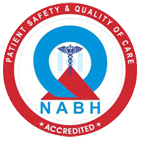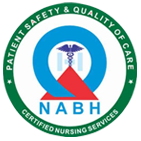The Mission Hospital Durgapur epitomizes a complete, wholesome; guideline based dedicated approach to all cardio logical problems both invasive and noninvasive. Equipped with the latest generation cardiac catheterization laboratory available in the world today all complex cardio logical interventions like primary and complex angioplasties, balloon valvuloplasties, carotid and peripheral interventions, aortic stent graft implantations, cardiac resynchronization therapies, implantable cardioverter defibrillator imolantations, device closures of various congenital defects – the list is unending. Suffice it to say whatever happens in cardiology today in the world happens here maintaining similar international standards.
A young dynamic team with learned expertise is the key to this success. In the 3rd year of its birth it has received accolades from all and sundry regarding the phenomenal achievements with enviable success. This has been instrumental in developing a commendable paediatirc cardiac surgery services providing informative and accurate echocardiographic and cardiac catheterization details which forms the backbone to this.
All the services are provided at a very reasonable rate well within the limits of affordability of the middle class as well as providing tiered services with plush comfort for those desiring. However it has furthered its humanitarian efforts by offering services even to the underprivileged through a different wing backed up by NGO mediated healthy heart services which is really a remarkable feat remaining within the realms of a private corporate infrastructure.
The hospital holds regular check up camps using on field yet remotely interpretable ECG machines, on field echocardiographic screening facilities, on field basic blood parameter assessments. Ill patients are transported by the hospital in fully equipped critical care ambulances equipped with ventilators cardiac defibrillators and external pacesetting arrangements.
The department is preparing to offer academic courses like PG diploma in community cardiology, DNB courses in cardiology , on-hand echocardiography training to deserving and aspiring young doctors. A technician training course is also in place for Cathlab and echocardiography technicians. We are to hold 'The Mission Cardiology Update' from 2011 onwards an endeavor to refresh and update the knowledge of local physicians, cardiologists and post graduate students.
Invasive Cardiac Electrophysiology and Radiofrequency Ablation - An Introduction
This is a specialized subdivision of Cardiology that deals with cardiac rhythm disorders. By this, we mean abnormalities of the heartbeat. In Medical terminology these are referred to as CARDIAC ARRHYTHMIAS
What is Cardiac Arrhythmia?
Normally our heart rate ranges from 60-90 beats per minute. There are some situations however when the rate suddenly increases to 140 beats per minute or above. Since our body physiology is not normally used to such a heart rate, the symptoms like palpitation (abnormal awareness of heartbeat), breathing difficulty, and loss of consciousness or at times even death. These arrhythmias can arise from either the top chambers of the heart (called atria) or from the bottom chambers of the heart (Ventricles). Inn medical terminology these arrhythmias are called as SUPER VENTRICULAR TACHYCARDIA (SVT) OR VENTRICULAR TACHYCARDIA (VT). In the former group of patients the underlying disorder may be the WPW syndrome (Extra connection from atrium to ventricle).
What causes these arrhythmias?
This problem affects all age groups. Most of the patients with curable forms of arrhythmias are young and have otherwise normal hearts. They are active bread winners and are at the prime of their life. A chronic medical problem at this stage can be devastating for the patient and his family.
How were these patients treated earlier?
For ages such patients were treated with drugs called anti arrhythmic agents. These drugs are expensive, have a lot of side effects and are themselves potentially life threatening. Imagine taking such medicines lifelong!
What is the current approach worldwide?
This is where the field of invasive cardiac Electrophysiology comes in. The patient suffering from these palpitations first undergoes an electrophysiological study and the details of his arrhythmia are worked out. If conditions are suitable the patient undergoes the procedure of radio-frequency ablation which is a curative procedure.
What is Electrophysiology Study?
This is performed in the cardiac catherzation laboratory. Specialized equipment called EP lab system is required and specialized catheter which record cardio electro gram from inside the heart is necessary. Under local anesthesia, these catheters are introduced from the groin and placed in defined portions of the heart. The ECG from the heart is recorded on the specialized EP lab system. Using well-established techniques the patient is made to have this palpitation. Analysis of the ECG from within the heart during palpitation will enable us to locate the source and type of problem. If found suitable, the procedure of Radio frequency ablation is then carried out.
What is Radio-frequency ablation?
Once the site of the origin of palpitation is confirmed, a special catheter is placed at this point and the offending area is destroyed by applying Radio frequency energy using a specific device. Radio frequency current is a form of alternating current and has the advantages of producing a painless destruction of small-localized area of tissue.
What are the results of the procedure?
Normally very gratifying with success rates of over 90% and the recurrence rates are very low. The complications are negligible if the cases are selected suitably. The procedure takes around one to two hours. Worldwide this is the procedure of choice for patients with most forms of cardiac arrhythmias and has revolutionized the treatment of patients with this disorder.
Requirement of Specialized personnel
The procedure can only be performed by cardiologists with special training in this field. The Mission Hospital, Durgapur currently has acquired the most sophisticated EP equipment available in the world and procedures are actively being done by experienced and well-trained personnel.
What is an ICD (Implantable Cardioverter Defibrillators)?
This is a pacemaker like device which is implanted subcutaneously that continuously monitors the heart rhythm, and delivers a life saving shock if a dangerous heart rhythm is detected. They can significantly improve survival in certain groups of patients with heart failure who are at risk of ventricular fibrillation (VF). VF is a deadly heart rhythm disorder that is the primary cause of Sudden Cardiac Death (SCD). ICDs have the ability to act as pacemakers for too slow heart rates and can be modified to provide Desynchronizing therapy also.
Cardiac Resynchronization Therapy for the Heart Failure.
This is a new emerging form of therapy. Patients with Heart failure using special pacing technique, the cardiac mechanics are reestablished producing symptomatic improvement for the patients who have no other choice.




